Restoration of a Lancaster B Mk.1 Model
By Michael Dobrzelecki
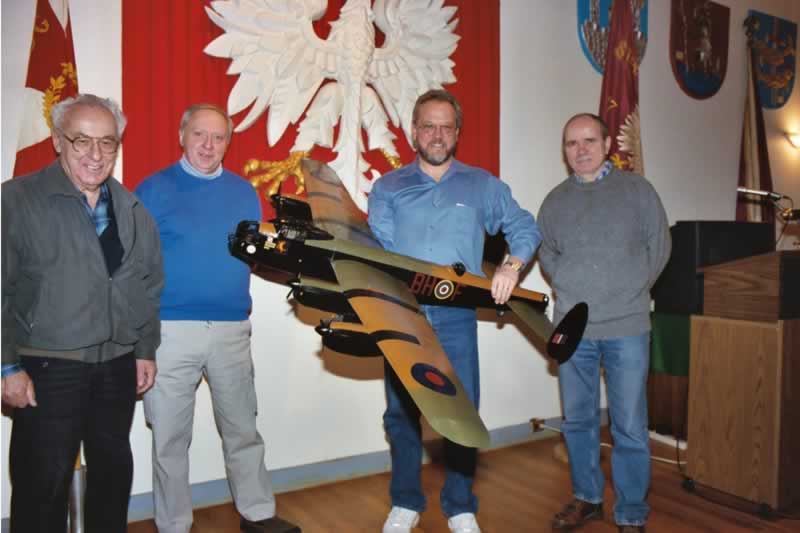
There comes a time in everyone's life when the realization occurs that there are more days behind you than in front of you. This is especially true for the generation of World War II veterans. The news media reports that the world is losing World War II veterans at a rate of 1,000-1,500 per day. Polish veterans, although arguably cast of the most hardy stock, are not immune to this reality. This is one of the driving forces behind the creation of the PAVA Foundation (Polish Army Veterans Association Foundation) - to leave behind a legacy, a record of the Poles' contribution, service and sacrifice in that war, those that preceded it and those that followed. The Museum of Polish Military Heritage in America is the embodiment and caretaker of this legacy. Housed within the PAVA's headquarters in New York City (Irving Plaza, where they have the small venue concerts), the museum also serves as a venue for promoting Polish cultural activities and exhibits. It is this mission which led to the museum's acquisition of the large Lancaster bomber model, which now hangs in the large room at the PAVA building with the Polish city crests, the Sala Herbowa.
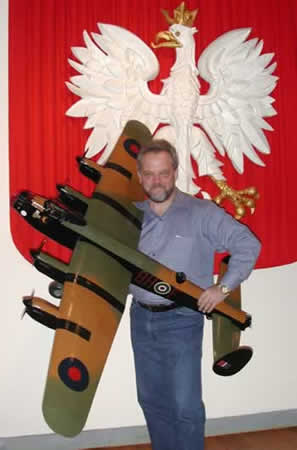
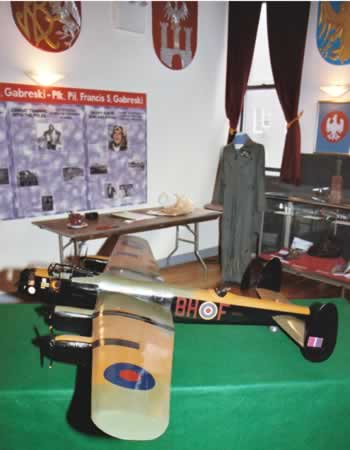
The Lancaster is hanging in front of the Francis S.Gabreski Exhibit I created for the Museum of Polish Military Heritage. My Gabby P-47D-25-RE which forms a part of this exhibit was also featured by LSP. Gabby's USAF flight suit from his service days at Kadena AFB in the 1960's appears in the background.
Bomber crews usually do not receive the same amount of recognition as their counterparts in the fighter squadrons. If Poles know anything of their aviation history, they might, at best, have some familiarity of the contribution of the 303 Kosciuszko Squadron during the Battle of Britain. Fighter pilots were flashier and received the most press coverage as "gallant knights of the air". Ask the average fighter pilot who they looked up to and you might be surprised when their answer centers around their respect for the bomber crews who, night after night, had to maintain a straight course in their bomb runs in a slower aircraft, which were a sitting duck for anti-aircraft fire and enemy night fighters.
If you were assigned to a bomber squadron, you could not ask for a better aircraft than the Lancaster, which was the best four-engine bomber in the Royal Air Force. The Poles in 300 Mazowiecki Squadron, which previously flew British Wellington twin-engine bombers, re-equipped with the superior Lancaster in 1944. Between 1940 and the end of the war in the spring of 1945, 300 Squadron flew 3,891operational sorties, dropped 12,000 tons of bombs, laid 1,500 tons of mines, attacked 133 targets and suffered 371 killed-in-action, 19 missing-in-action, 68 airmen taken prisoner and 80 aircraft lost in action - quite a significant record achieved at no small sacrifice.
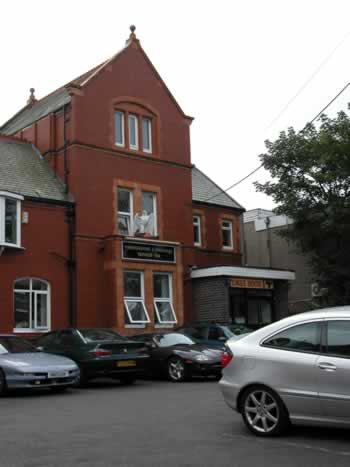
The Lancaster model has a Polish Air Force lineage. It hung for years from the ceiling of the Polish Air Force Club in Blackpool, England. Blackpool is a somewhat seedy English seaside resort, roughly equivalent to Asbury Park on the Jersey shore in the States. Reportedly cold, rainy and miserable, even in the summer, Blackpool is significant to the history of the Polish Air Force, because it is the first location chosen by the RAF to house the exiled Polish Air Force personnel that escaped first from Poland, and then later from France after the Germans took over Europe. With the passage of time the membership of the PAF club in Blackpool dwindled due to attrition from old age and the club was faced with closing its doors and the rich history of the club was in danger of being lost forever.
Mr Steve Rasiej - Executive Director of the Polish Air Force Veterans Association Foundation and Vice Commander of the PAFVA District 2 visited the club in 1990's and learned about its pending demise. He thought it would be a good idea to preserve some of the artifacts held in the club's collection and he settled on the large Lancaster model. He arranged with one of the remaining veterans, Tadeusz Ruman, to have the model donated and a mechanic friend of Ruman's disassembled the model and packed it for transport in a 6' x 2' x 1.5' wooden crate - total shipping weight: approximately 30kg. Shipping companies would have charged several hundred dollars, so Steve decided to travel to England to personally coordinate the transport. The crated model was first delivered to Mr. Rasiej's brother-in-law in London, where Steve picked up the model and then managed to persuade Continental Airlines to ship the model over as personal baggage at no charge. Steve then used those same powers of charm and persuasion in recruiting my services to restore the model. I gladly accepted the challenge. New Jersey IPMS has provided models for several exhibits at this museum since 1994.
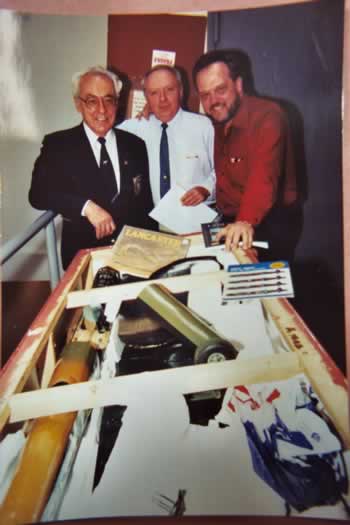
The model arrived in the U.S. packed in a wood box shaped like a long flat saltbox house. The aircraft fuselage and wing sections were braced within the box in a framework, with the stabilizers, fins, propellers and other smaller parts distributed throughout the crate. It arrived pretty much intact, the only serious damage being a fractured main box spar in the fuselage where the center wing attachment is located. The model is made from wood and the wings are bolted together. The bolts are accessed through removable panels in the wings' underside, somewhat similar to a real aircraft. This is the first model I ever used my ratchet wrench set to assemble. More folk-art than true scale model, the plexi-glass areas are merely represented by wood strips representing the framework of the canopy or general shape of the turrets and nose blister, but no glass. Because of its curved shaped, the dorsal turret was framed out in curved thick electrical wire with its rubber insulating coating intact, the various lengths being soldered at the top apex of the turret's shape. The name of the original builder is lost to time and tide, but I suspect that the model may been overhauled at least on one previous occasion. After examining the model thoroughly, I came to respect the original model maker's skills.
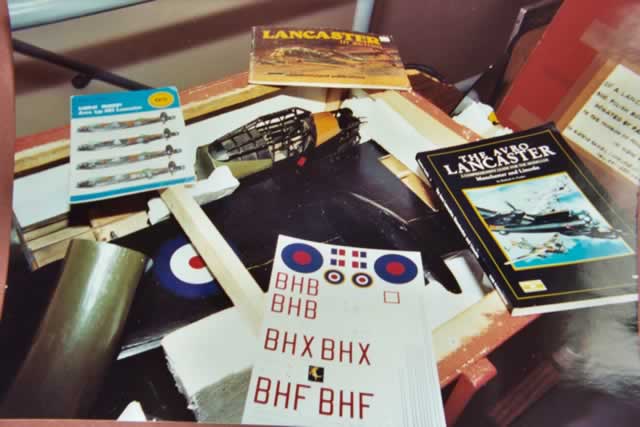
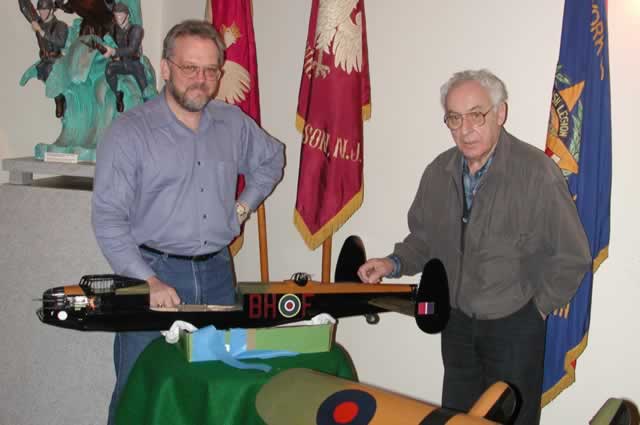
The model was very dirty, so a major clean up was the first order of the day - Scrubbing Bubbles bathroom spray cleaner did the trick. Then, a list of repairs was made. Besides the broken box spar, the wing tips, canopy framework and turret framework were chipped and broken. Surface cracks, probably due to temperature and humidity variations over the years of hanging from the club's ceiling, marred the black painted lower surfaces and had to be filled with red body putty and sanded smooth. The missing canopy and turret frames were replaced with strips of basswood. Other repairs were made using Devcon 5-Minute Epoxy glue or Slo-Zap super glue reinforced with a combination of tiny screws and pins I bought at a model railroad hobby shop. One of the landing gear doors was missing, so I fabricated a replacement. One of the auxiliary landing gear braces was missing. I made up another from wood dowel stock. The model's machine guns were bent and broken, so I replaced them with the same telescoping KS brass tubing used by the original model builder, taking the opportunity to correct the stagger on the tail guns. I performed a test reassembly of the model to see if there were any other structural problems or other issues and found none. The impressive size of the reassembled model became apparent with its wings spanning over six feet wide and the fuselage length exceeding 4 feet.
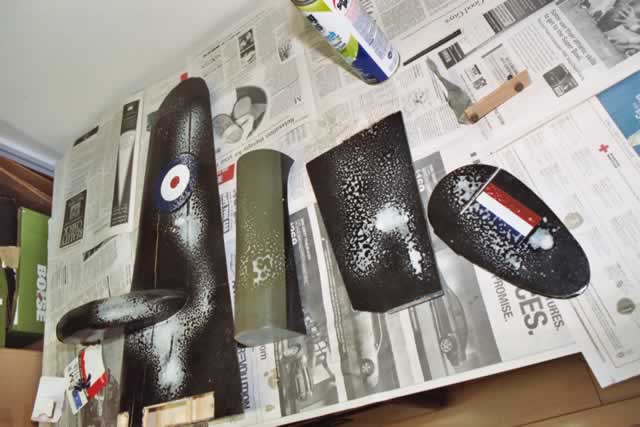
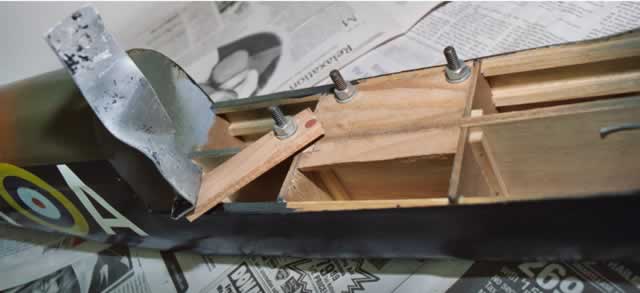
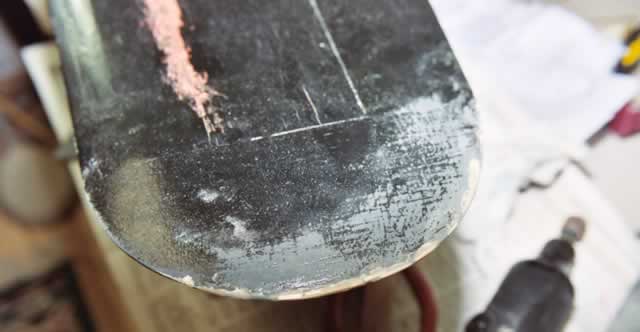
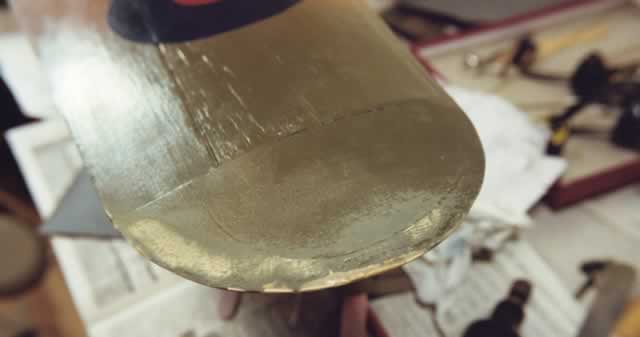
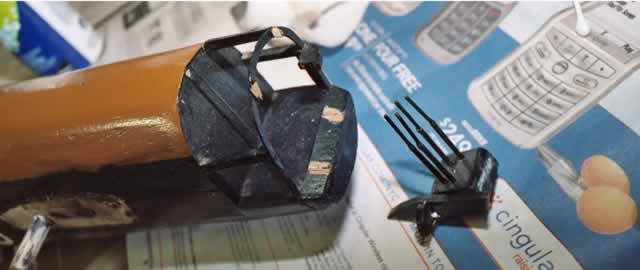
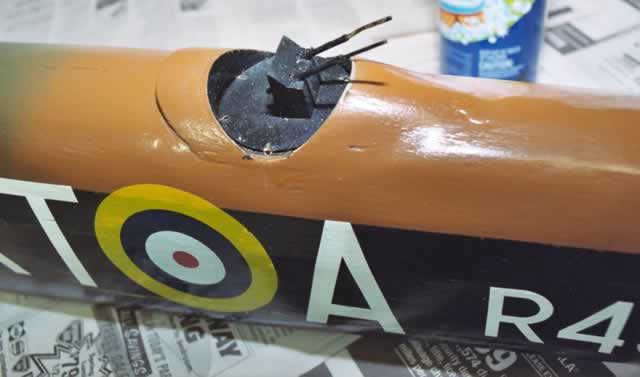
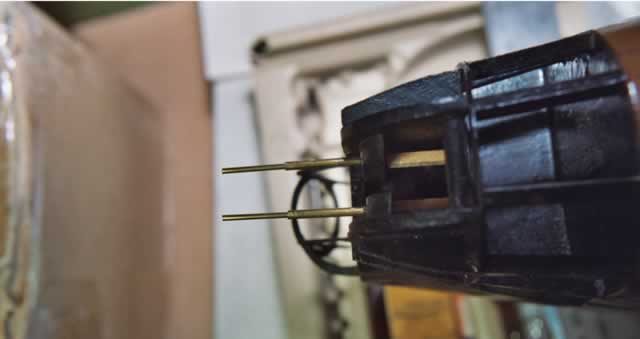
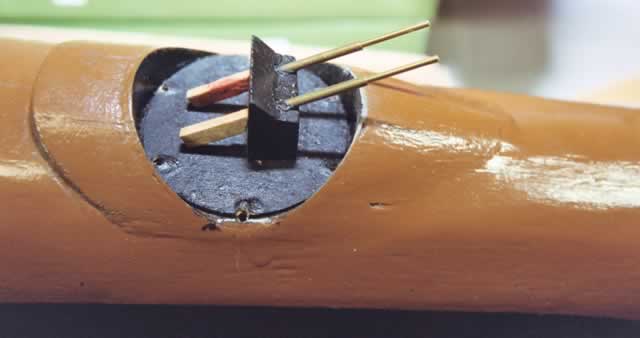
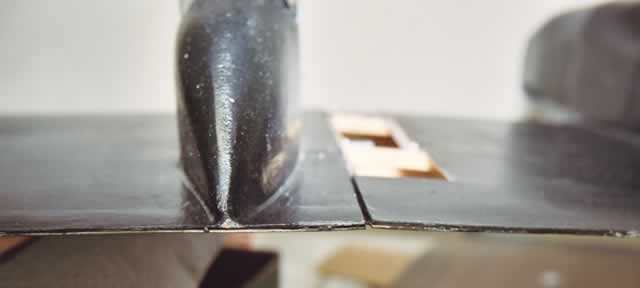
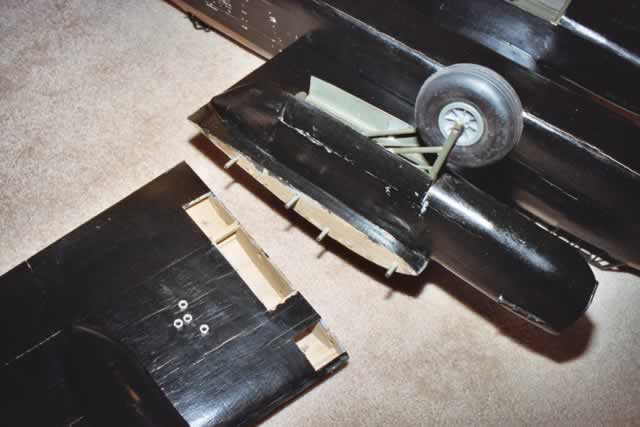
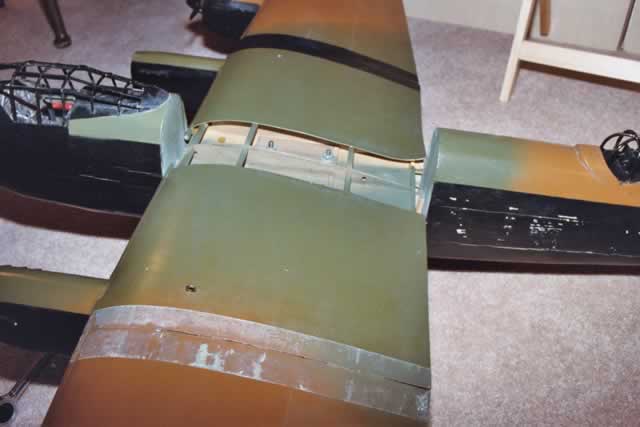
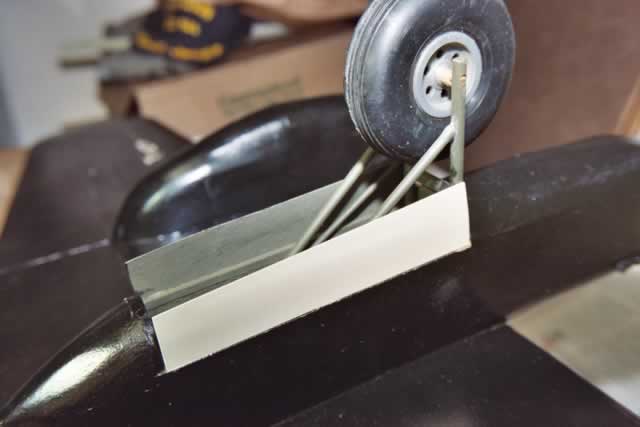

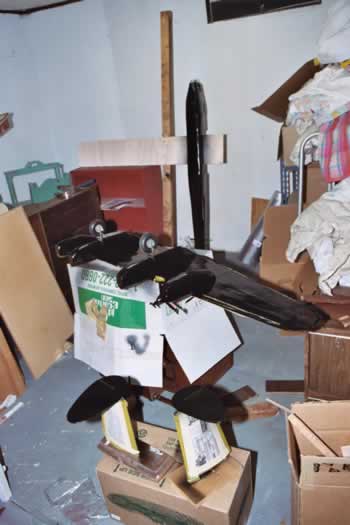
Refinishing the paint and markings posed some problems. Repairing the numerous surface cracks dictated that the entire Night Black undersurface had to be repainted, which would complicate reapplication of the markings, which had their own issues. The model's original markings were not accurate. The RAF roundels were the wrong size and type - being more akin to 1940, rather than 1944-45. The code letters on the aircraft were white and somewhat reminiscent of post war markings, but were inaccurate for any Lancaster squadron, let alone a Polish unit, so the decision was made to strip the markings, fill in the cracks, sand down the areas where the original markings were located along with the filled cracks, repaint the Night Black undersides and reapply new markings.
The upper surface camouflage paint was in better shape, although though the pattern was inaccurate and the original builder used the expedient method of applying black duck tape over the wing section joint locations. After some hemming and hawing, I decided to just touch-up the original Dark Earth and Dark Green upper surfaces, wanting to leave something of the original builder's paintwork. The curious thing about the model's original upper colors is that I immediately recognised them as old "small-bottle" Testors gloss colors from my misspent youth of the 1960's. Luckily, they are still available, although only in flat finish. The only spots I sanded on the top surfaces was the areas where the black duck tape was removed. Painting a model of this size presented a challenge, to say the least. I decide to build a cross-shaped paint fixture to hold the model's fuselage from scrap lumber in my garage using the four bolts on the center box spar attachment as a guide. I affixed the wood cross-brace to an old bookcase for stability. Eschewing the use of my airbrush, I sprayed the Night Black using Valspar enamel for plastics spray paint I bought at Lowes-it took 2 cans.
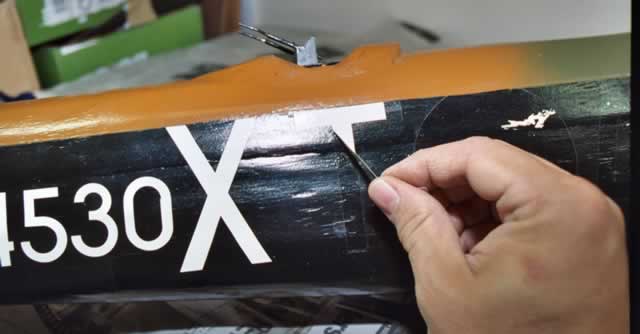
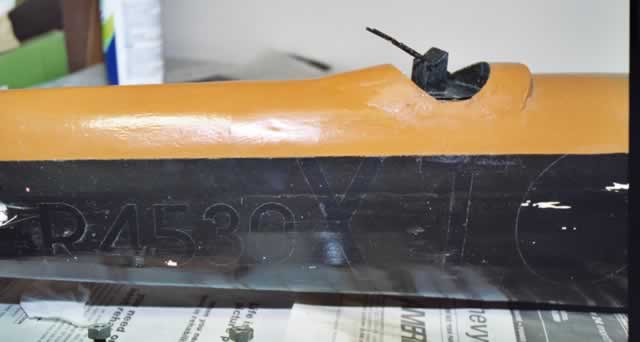
After some research in my extensive archives, I settled on a Lancaster coded BH F, serial number ME470. This Lancaster, serving with 300 Mazowiecki Squadron in 1944 and 1945, sported some striking nose art - a nude female figure dropping a yellow bomb while astride a yellow crescent moon with yellow stars on a dark indigo blue field - very appropriate for its night mission. Next to the Polish Air Force red and white chessboard, there are 14 yellow bomb mission marks recording the service of this specific Lancaster as a bona fide war veteran. The markings were available on a Polish Techmod 1/48th scale sheet, which featured a selection of Polish 300 Squadron Lancs, including the bird I chose.
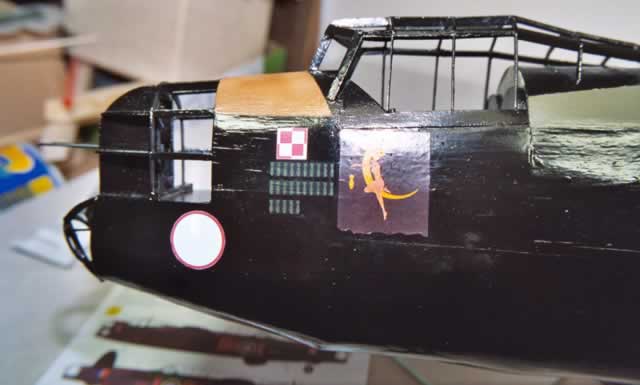
I enlarged the sheet to roughly 1/16-1/17th scale on a color copier and printed them out on 8 ½" x 11" white and clear Micro-Mark decal paper, making multiple copies to serve as insurance. I cut the markings out and noticed that some of the white decal paper showed around the cut edges, so I had to touch them up with the same color paint. I also had to double-up some of the markings to avoid translucency. For the roundels I first applied the decals printed on white paper then layered a set printed on clear paper atop the first set. This was my first attempt at making decals in this manner and applying them to a model. I must admit it worked well and will be using this method in the future for other custom work. I applied several coats of clear acrylic to help protect the models new paintwork and markings from dust and dirt while on exhibit at the museum. At my brother, Ron's, suggestion, I tried the new Tamiya clear in spray cans and it performed flawlessly. Being a large model, it took 3 cans. Before final assembly, I inserted a short version of the story of the model inside the fuselage atop the box spar attachment plate, so that future conservators will know of its origins and restoration, a practice I adopted from the procedures used by the National Air & Space Museum in Washington DC.
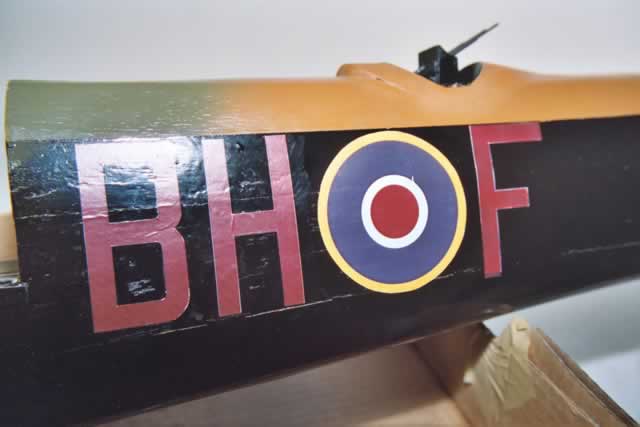
The completed model was re-hung from the ceiling of the Museum of Polish Military Heritage in America above the Francis S.Gabreski Exhibit (a previous NJIPMS exhibit) on January 28, 2006 by a team consisting of Michael Dobrzelecki, Steve Rasiej, Jan Koniarek and Teofil Lachowicz - all in all, a very interesting and decidedly different type of project for this master modeler, who last built a wood model back in the 1960s.
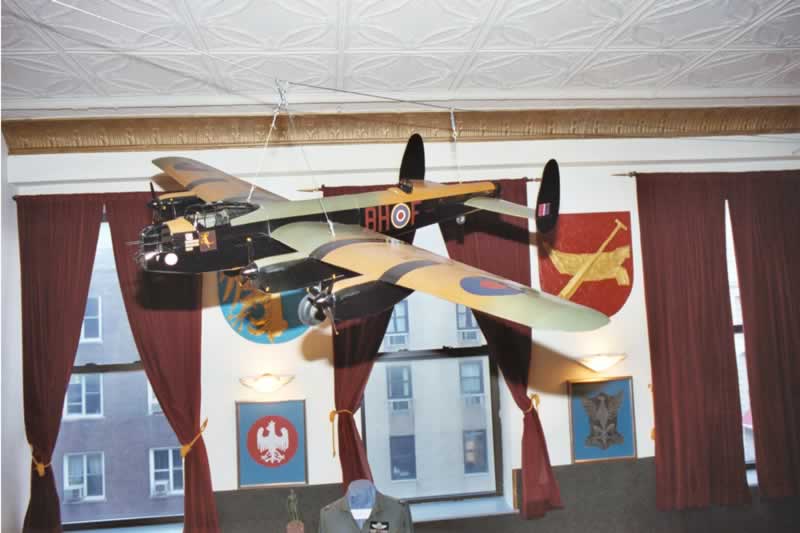
The Museum of Polish Military Heritage would like to thank the members of the Polish Air Force Club in Blackpool England, in particular Mr.Tadeusz Ruman, for donating the model, which will serve as a fitting testament to both the gallant Polish bomber crews that served in World War II and the legacy of the Polish Air Force Club in Blackpool.
© Michael Dobrzelecki 2006
This article was published on Wednesday, July 20 2011; Last modified on Saturday, May 14 2016
